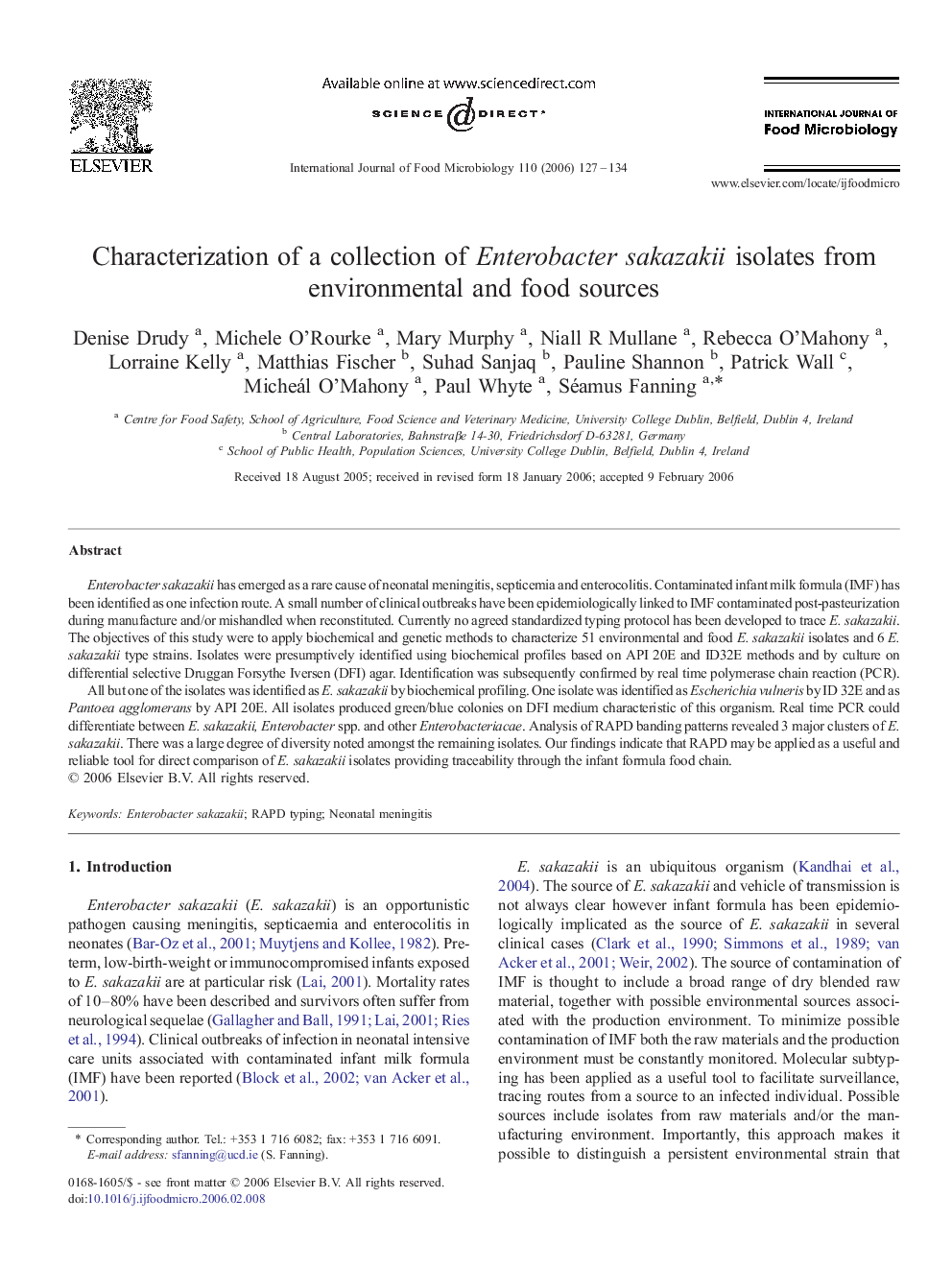| Article ID | Journal | Published Year | Pages | File Type |
|---|---|---|---|---|
| 4370114 | International Journal of Food Microbiology | 2006 | 8 Pages |
Enterobacter sakazakii has emerged as a rare cause of neonatal meningitis, septicemia and enterocolitis. Contaminated infant milk formula (IMF) has been identified as one infection route. A small number of clinical outbreaks have been epidemiologically linked to IMF contaminated post-pasteurization during manufacture and/or mishandled when reconstituted. Currently no agreed standardized typing protocol has been developed to trace E. sakazakii. The objectives of this study were to apply biochemical and genetic methods to characterize 51 environmental and food E. sakazakii isolates and 6 E. sakazakii type strains. Isolates were presumptively identified using biochemical profiles based on API 20E and ID32E methods and by culture on differential selective Druggan Forsythe Iversen (DFI) agar. Identification was subsequently confirmed by real time polymerase chain reaction (PCR).All but one of the isolates was identified as E. sakazakii by biochemical profiling. One isolate was identified as Escherichia vulneris by ID 32E and as Pantoea agglomerans by API 20E. All isolates produced green/blue colonies on DFI medium characteristic of this organism. Real time PCR could differentiate between E. sakazakii, Enterobacter spp. and other Enterobacteriacae. Analysis of RAPD banding patterns revealed 3 major clusters of E. sakazakii. There was a large degree of diversity noted amongst the remaining isolates. Our findings indicate that RAPD may be applied as a useful and reliable tool for direct comparison of E. sakazakii isolates providing traceability through the infant formula food chain.
